When teams work together on a project that spans several months or a year, they run out of words. My second Project Management Toolbox (the first one contains facilitation tools) is used to help break up a meeting or provide an object to help team members communicate with each other.
One of the hardest parts of working closely with a team over time is learning to respectfully disagree and interrupt one another.
The Project Manager should be constantly on the lookout for signs of stress or flashes of brilliance on the team. They should work to alleviate stress and amplify brilliance. As teams find their rhythm and internal shorthand, a few extra tools can be useful to help jump-start a discussion or return to an old one.
This is my fun box of tricks. Start your box today and add fun items that you find along the way. BONUS: Tell us what you would include in your stressbusters tool box or why you need one in the comments below to win your own set of project management tool boxes!
The box
Every good project manager has to stay organized. A very good friend gave me an official facilitation box of my very own at the end of a long project. Here is what it includes!
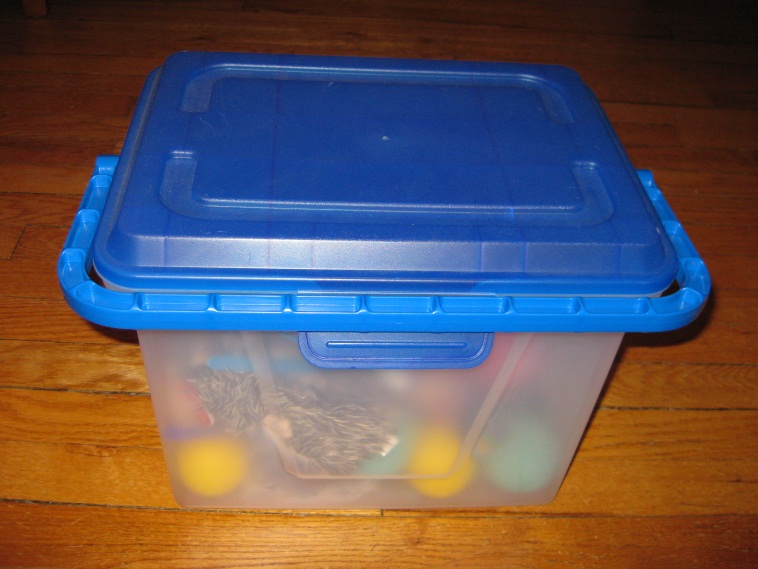
Stress relief
When teams sit in working sessions days after day and week after week, tension builds. It is helpful to share stress balls to give team members an object to release stress on (rather than each other). Some people are very tactile and find stress and kush balls relaxing.

How are you feeling?
I use the faces to let a team member tell me when they are feeling happy, crazed, or bored. I place the faces on the table and staff can pick them up to give me a gentle queue to address the sentiment in the room. Sometimes someone will hold a face and nod in the direction of the person who is making them feel crazed. This allows the Project Manager to segue into another topic, address the problem, or take a break!
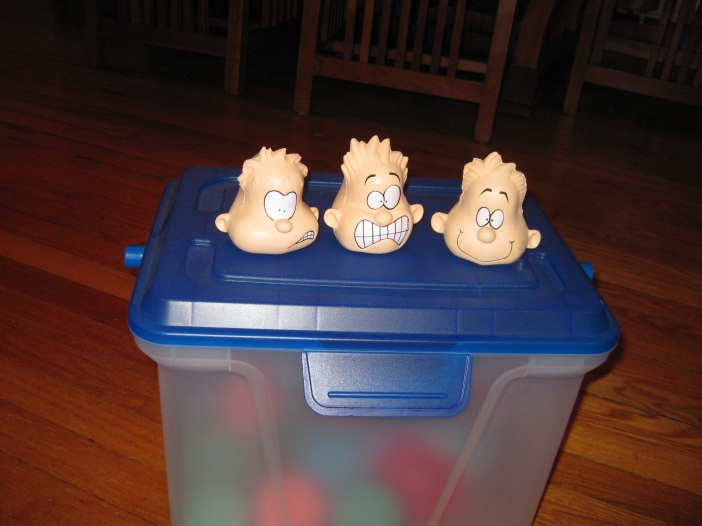
A bright idea!
The light bulb is a useful object to allow someone to interrupt if they have a brilliant idea. Instead of shouting, “SHUT UP – I have a great idea!” they can raise the bulb and the team knows to pause and listen to the idea. It may be the a-ha moment the team has been struggling to find.
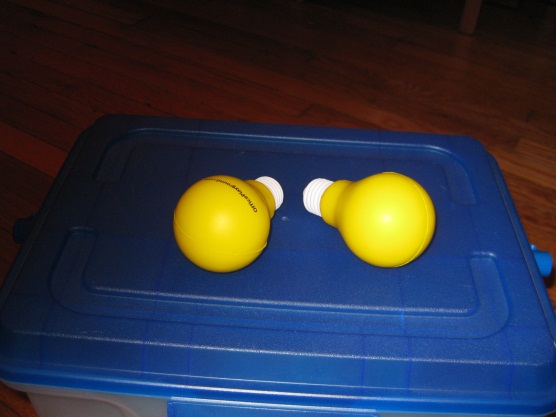
More stress items
Do team members find puzzles relaxing? Adding a few simple puzzles to your box may allow someone to have a moment of distraction and allow them to re-focus.
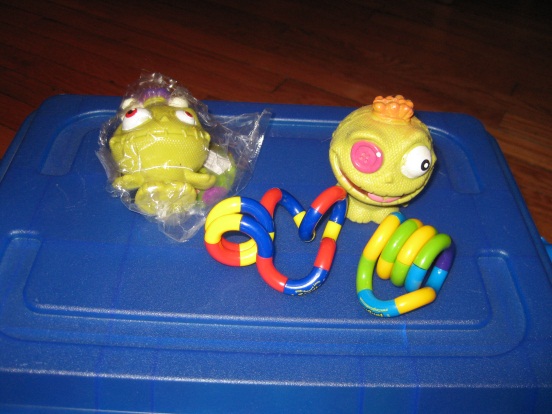
It’s not always black and white
Sometimes a topic is not black and white and there is no clear answer. If the Project Manager finds that the team is struggling to force a complex issue into ‘black-and-white’ terms, it may not be possible. Toss this object on the table to remind the team that they may be getting stuck. In cases of complex requirements, the Project Manager may have to bring in additional resources to negotiate a solution. The Project Sponsor must be kept up to date throughout the project so they are prepared to enter a discussion to provide executive guidance.

The political football
Is a process or requirement a political football? Are team members kicking an idea down the road because it is uncomfortable? The Project Manager should be aware of this situation so they can facilitate an answer. If you hear symptoms of a football or punt, say something and help the team name the issue and assign it to the rightful owner. It is always preferable to catch a ball with your hand rather than get a surprise hit to the face.

Get the monkey off your back!
Is a team member getting antsy all of the sudden? Is part of the project an irritation or annoyance? Don’t let frustration fester; toss this object to the person to say – Get the Monkey off your back! The sign of a high-performing team is learning to respectfully identify a sensitive issue and talk about it. In the words of Tobin Conley, “Put a name to your pain.”

Is someone getting a little prickly?
If a team member is unusually prickly about a topic, this object can remind them to slow down and discuss the root of the problem. Why is this issue a problem for you? How can the team work together to vet the problem and come to consensus? One of the great outcomes of a cross-departmental team is that individuals get to know each other well and can support their position to their peers. During a membership staff meeting, Edward may provide a project update to his peers; he can share that Nancy from the communications team wants to ensure the messaging around the new process is clear to the customers. This also helps build trust across the organization.

The elephant in the room
Are staff members pussyfooting around a sensitive topic? Is one of the requirements that is causing a problem tied to a senior staff member? The Project Manager may have to toss out the elephant to alert the team that they are not directly addressing an important issue. While the Project Manager may not be a subject matter expert (SME), they are a project expert.
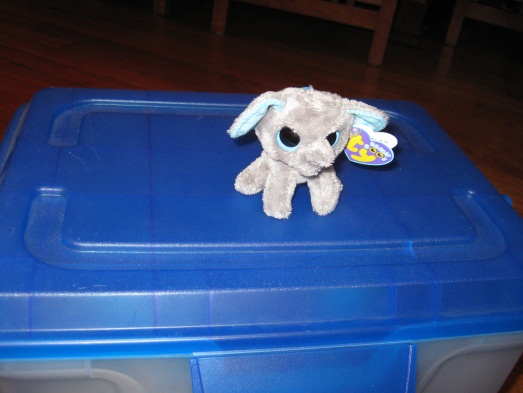
Pat yourself on the back
Sometimes people just need a simple pat on the back. This object can let you give yourself a pat or you can reach across the table to share a pat with a team member.

The unicorn
This lucky item is the magical unicorn! It needs to be tossed on the table when the ideas are so far out of range that they might as well be built on a rainbow. Yes, it would be wonderful to be on the bleeding edge. Yes, it would be exciting to build the next great application. Unfortunately, THIS project has to be built using existing tools and an association-sized budget. So use the unicorn to snap the team back to reality.

Scope!
During design meetings, it is difficult to balance the fine line between developing new or improved functionality with spawning new creations. It is the job of the Project Manager to help the team walk this tightrope. The Project Manager also has to ensure that the project has enough resources – both people and money – to complete the project.
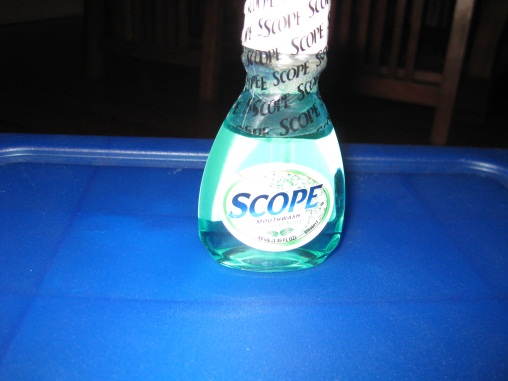
You’re fishing
Are team members fishing for trouble or compliments? Frequently, this is a sign that a team member’s needs are not being met. The Project Manager should be aware of this behavior. The Project Manager may need to meet with team members one on one to identify a problem and work to resolve the problem.
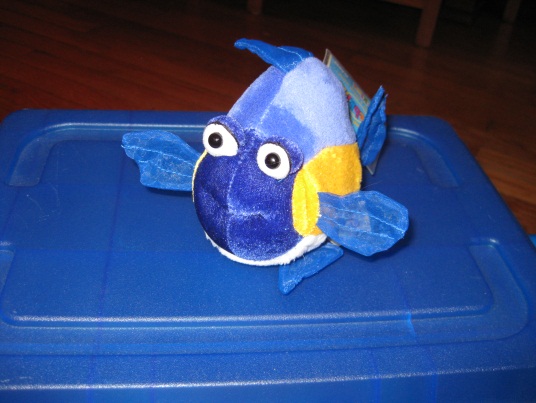
How long have you been talking?
Last but not least, skilled Project Managers are also time managers. It is important to respect individual schedules.
- Start meetings on time.
- End meetings on time.
- Set blocks of time to discuss a topic. A timer can be useful to set time so everyone is able to present their ideas.
- Schedule meetings when you have a quorum; it is not always possible to have all team members at every meeting.
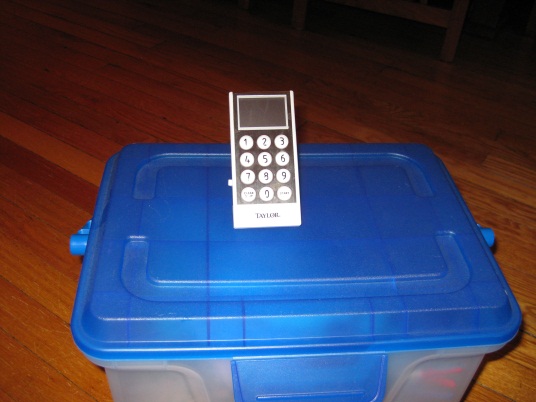
Now, tell us – what do you treasure in YOUR stressbusters tool box – or why do you want to win one from DelCor?!
